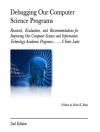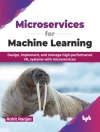Test automation is an essential tool in today’s software development environments. It increases testing efficiency and makes test procedures reliably repeatable.
This book provides a complete overview of how to design test automation processes and integrate them into your organization or existing projects. It details functional and technical strategies and goes into detail on the relevant concepts and best practices. The book’s main focus is on functional system testing.
Topics covered:
• An introduction to test automation
• Objectives and success factors
• Preparing for test automation
• Introduction to generic test automation architectures
• Design and development of a test automation solution
• Risks and contingencies during deployment
• Metrics and reporting
• Transitioning manual testing to an automated environment
• Verifying a test automation solution
• Continuous improvement
The appendix contains an overview of software quality characteristics according to the ISO 25010 standard, and lists potential test automation applications within this context. It also provides an introduction to load and performance testing, and a sample catalog of criteria for selecting test automation tools.
This book is fully compliant with the ISTQB® syllabus and, with its many explanatory examples, is equally suitable for preparation for certification, as a concise reference book for anyone who wants to acquire this essential skill, or for university-level study.
Giới thiệu về tác giả
Richard Seidl has seen and tested a lot of software in the course of his career: good and bad, big and small, old and new, wine and water. His guiding principle is: “Quality is an attitude”. If you want to create excellent software, you have to think holistically and include people, methods, tools, and mindset in the development process. As a consultant and coach, he supports companies in their efforts to turn agility and quality into reality, and to make them part of corporate DNA.












